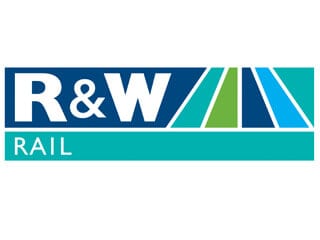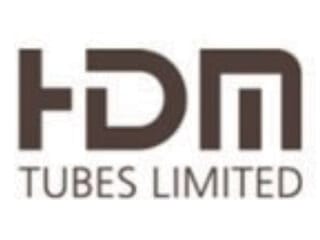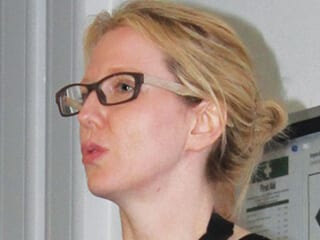Latest News
Can you help promote student membership of ICorr in your local university?
The activities of the Membership Development Committee are gathering pace, with the latest committee meeting taking place in June. A major initiative to grow our student membership is now underway, led by Young ICorr chair Chris Bridge, who has visited the Materials Science department at the University of Oxford to sign up students for free ICorr membership. This has proved to be a far more direct and effective way of engaging with students than email contact with individual academics.
The plan between now and September is to build a cohort of volunteers to roll this process out to other universities in the autumn. If you are willing to visit the Materials Science department of your local university (or even better, the university you attended yourself) we would love to hear from you. This would involve an hour or so of your time to give a short presentation outlining the benefits of membership to a group of students (slides will be provided) and to answer any questions they have about the Institute.
Student membership of ICorr is free and the main barrier to signing up new members is simply lack of opportunities for contact. By reaching out to relatively large numbers of students in this way we should be able to increase uptake of membership significantly – and if we can retain even a fraction of these in the longer term it will make a massive contribution to the sustainability of the Institute.
If this sounds like something you could help with, please contact Chris, at bridge.christian@gmail.com.
Other ongoing membership development activities include refreshing the Institute brand and website, simplifying procedures for applying for membership and upgrades, establishing a policy on subscriptions for retired members, and developing the concept of Corporate Membership. More information on these and other initiatives will follow in future issues of Corrosion Management.

Latest News
R&W provide a comprehensive range of rail, civil engineering, traffic management, environmental and plant specialist services, operating primarily in Highway and Rail environments. Their founding principle of direct employment and asset ownership ensures they can offer reliable and yet flexible services to all their clients. R&W’s aim is to be “employer and contractor of choice”, a vision which has established their capability of delivering all aspects of project life cycles (plan, design, build, refurbish and recycle). To support this R&W have a highly skilled and motivated workforce of more than 200, who embrace the company values of being safe, respectful and always delivering. This culture is the “R&W Way” and has helped them develop effective and collaborative relationships with clients, regularly being rewarded for their service and operational excellence. They have an in-house capability to train their workforce to achieve ICATS accreditation and have an in-house ICorr Paint Inspector to ensure the works are carried out to the client’s specifications. They strive to continually improve what they do and work hard at achieving recognised business standards, holding numerous accreditations (i.e. ISO 9001//18001/44001/14001).

Latest News
HDM Tubes Ltd., based in Cardiff, is a leading manufacturer of spirally welded LD pipes for the foundation and construction industries. The mill layout has been specially designed to roll heavy gauges up to 32 mm and long lengths up to 45 m. The Cardiff factory is equipped with shot blasting/painting, clutch/interlock welding, facilities for combi-wall applications, and also has a workshop for any other necessary attachments to meet custom-made pipe designs.
As the only spiral pipe producer of heavy gauge and long pipes in UK, HDM Tubes Ltd. is able to provide short lead times for specific projects and customer needs. Taking advantage of their base at Cardiff Docks, they are able to ship long and heavy pipes directly to vessels, barges and trucks and can serve around the UK, Ireland and Europe.
HDM Tubes Lltd is also certified with quality, health and safety and environmental management systems registered to ISO 9001, ISO 14001 and ISO 18001.

Latest News
This month has seen the long awaited ‘buried pipe’, which will allow candidates on the CP Course to carry out testing of instrumentation on a live piece of buried pipe, installed at the IMechE Training facility in Sheffield. This has been a labour of love and frustration for many over a long period of time, but it is also a symbol of what can be achieved when two organizations with some very determined people put their heads together. This will bring an enhanced learning experience for people attending CP training in Sheffield. There has also been much time and effort put in by many in recent months looking at how we can be the best in class at the training we offer.
The other wonderful news this month is that we are now in possession of our new home, 5 Saxon Court Northampton. My sincerest thanks go to Trevor Osborne for the hard and diligent work that he has put in to make this possible. It has been the wish of Council for some time to see us in a permanent location and that has now been realised. There are some changes that need to be made to the property, but we are looking at a move in date of November, and we would welcome a visit from you all.
I was lucky enough this month to have a tour of the Sir David Attenborough polar vessel just prior to the hull being launched, but the weather made it feel like a shipyard in Singapore rather than Birkenhead!
We have held productive PDTC and Council meetings, there is good progress being made in our efforts to provide up to date and interesting new courses, and you should see the results of this in coming months. Council was as ever a lively debate with good progress being seen by the Membership committee. I would like to take this opportunity to thank Bob Crundwell for his years of service to the Institute as a Past President and active role in the institute, Bob has decided to stand down from Council and we wish him all the best.
I hope you all continue to enjoy the summer.
Sarah Vasey, ICorr President
Latest News
It is a great pleasure and privilege to receive the Institute of Corrosion, Corrosion Engineering Division Paul McIntyre Award. Paul was a group leader at the Central Electricity Research Laboratory (CERL) when I joined in 1979. He was leading a group on fracture mechanics and I worked with him and his team on grain boundary segregation using the techniques I has recently mastered in my DPhil work at Oxford University Materials Department and AERE Harwell. I also worked on the denting corrosion problem in PWR steam generators, oxide dating as a tool for failure analysis and then on the durability of the reinforced concrete foundations of the supergrid towers.
This led me away from power generation corrosion issues to corrosion of steel in concrete and to Taywood Engineering, the laboratories and consultancy arm of Taylor Woodrow Construction, which was building the prestressed concrete pressure vessels for the Advanced Gas Cooled Reactors. Taywood diversified into concrete durability which meant that I was fortunate enough to lead the group that designed and installed some of the first impressed current cathodic protection systems on reinforced concrete structures in the UK, Hong Kong and Australia.
Cathodic protection of steel in concrete had been pioneered by the late Dick Stratfull of Caltrans who took the concept of a high silicon iron anode in coke breeze backfill and “flattened it out” to apply to bridge decks. Using pancake anodes and a coke breeze blended asphalt he created an anode that could be used on trafficked surfaces. In North America they were not using waterproofing membranes on decks which led to massive potholing problems due to de-icing salt ingress leading for reinforcement corrosion and consequent cracking and spalling of the concrete cover. Stratfull and others also developed the half-cell or reference electrode technique for measuring the corrosion risk of steel in concrete leading to the development of ASTM C876.
In the UK, Europe and the rest of the world our corrosion problems were different. As waterproof membranes were applied to bridge decks, the problem was the deicing salt run-off onto substructures. We were also finding problems with calcium chloride used as a set accelerator on buildings. Trials were carried out on exposure slabs at Taywood’s Labs for the Transport Research Laboratory and then the first trials were apllied on bridge substructures on the Midland Links Gravelly Hill Interchange. As these were substructures, conductive organic coatings were used. Taywood worked with one of the leading technical coatings suppliers, Blundell-Permoglaze, to trial and optimise a suitable coating that has the adhesion, permeability and conductivity to be a suitable anode system for reinforced concrete structures. Meanwhile we had another trial in a building at Marylebone Station with calcium chloride set accelerator and then the VAT office in Southend where it was applied to the calcium chloride ridden first and second floors.
Anode systems continued to develop, first with the mixed metal oxide titanium mesh and titanium ribbon anodes and then with the probe anodes in grids of drilled holes. The publication of the NACE Standard RP 0290 swiftly followed by the European standard BS EN 12696 formalised the design, procurement commissioning and operation of impressed current cathodic protection systems for steel in concrete. One of the most important items was the consensus that the 100mV decay criterion was suitable for steel in concrete. This mean that the accurate calibration of reference electrodes was not essential and if they drifted with time they could be used as long as they were stable over the polarisation or depolarisation period. It has been shown that it is impossible to recalibrate a reference electrode embedded in concrete so measuring a shift meant that drift was not important. An excellent report on the background and theory with a section on its application in concrete is given in NACE Report 35108.
I went to present my early work at a NACE conference in 1987 in San Francisco. The proceedings of the symposium on corrosion of steel in concrete were published as a book by NACE and has been on sale until recently when all papers became available on line. On my way back from San Francisco, I stopped in Washington DC to meet the start-up staff of the Strategic Highway Research Program (SHRP), which was spending $150 million on highway research, mostly on durability and $50 million specifically on the assessment and remediation of reinforcement corrosion on highway bridges. I ended up at Technical Contract Manager for that research and worked with some of the leading researchers and engineers in the USA and Canada working on concrete durability at that time.
On returning from the USA in 1990 I set up my own consultancy and I have worked on corrosion problems in reinforced and prestressed concrete all over the world from the National War Memorial in Wellington to a container port in Zanzibar and design and installation of impressed current cathodic protection during construction on a massive building in the Middle East. I worked on durability modelling for reinforced concrete with the Building Research Establishment and helped in the development and promotion of resistivity and polarisation resistance meters for reinforced concrete.
I have also been active on National and International Standards bodies which I know was close to Paul McIntyre’s heart. He and I would see each other occasionally at such meetings as CERL was closed down with the privatisation of the electricity industry. His death in 2012 was a sad loss to the industry. I have chaired the committee that revised BS EN 12696 on cathodic protection of steel in concrete and then oversaw its conversion to BS EN ISO 12696. I also chaired committees that produced the NACE and CEN standards on electrochemical realkalization and chloride extraction of steel in concrete as well as chairing and participating in development of a number of other NACE standards, test methods and reports on corrosion of steel in concrete and early 20th century buildings.
It has been an interesting career so far working with very diverse teams. The projects have ranged from applying cathodic protection to early 20th century steel framed buildings such as Selfridges Department Store on Oxford Street to Spaghetti Junction in Birmingham and a recent fascinating project involving the design, installation and commissioning of a retrofitted galvanic cathodic protection system with a 50 year design life on a dock wall. There have also been interesting tunnel projects in the UK, USA and Canada and basements in the Middle East and the UK.
Click below for copy of the letter:
2018.07.17 PMcIntyre ArticleR1

